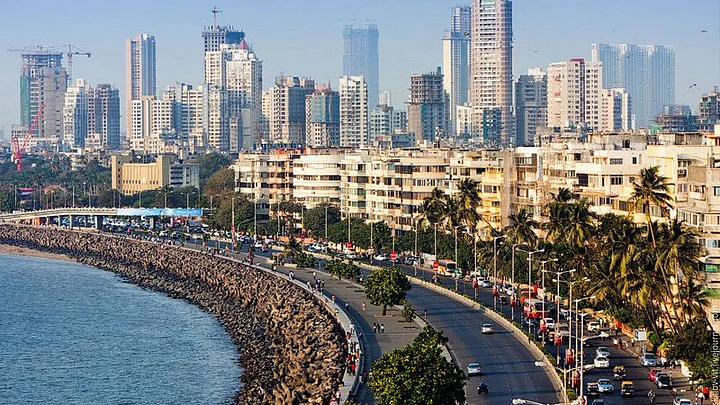Maharashtra turned 56 today. Almost all these years have been turbulent and tense. It is still searching for its identity or features common to all regions.
Chief minister Devendra Fadanvis is on record after taking over the state’s reins that he still believes Vidarbha should be a separate state. Like Telangana, Jharkhand and Chhattisgarh.
Demand for Trifurcation
The BJP is committed to the formation of Vidarbha. Sharad Pawar’s NCP, like on all issues, has a dubious stand on this. The NCP would not mind the separate state for Vidarbha but may not participate in the campaign. Pawar and his party have roots and links primarily in western Maharashtra (and among the Maratha community).
Western Maharashtra is known for the cooperative movement (now in a shambles) and sugar barons. It is also known for enterprising Maratha farmers. But their main identity is proximity to power. Pawar is their quintessential representative. The Marathas as a caste and Pawar as their leader are often envied for their prosperity and political skullduggery.
Marathwada is one of the neglected, backward regions, part of the Nizam’s Hyderabad state. It became part of India in 1948 after “police action” against the Nizam. It became part of Maharashtra in 1960 when the state was carved out. That was because most people in Marathwada spoke Marathi.
Today, Vidarbha is associated with farmers’s suicides. Marathwada is known for its droughts, famines, rain shortfalls, hailstorms and overall backwardness. But Marathwada came on the “suicide belt” only recently. Mavericks in Marathwada have begun saying that the region should be made a separate state too.
Is Mumbai Maharashtra and Vice Versa?
But most people outside Maharashtra recognise the state because of its glamorous capital, Mumbai. Though Mumbai in no way represents the ethos, culture, lifestyle and lingua franca of Maharashtra. But this is not unique to Maharashtra. Most people outside Bengal feel Kolkata is Bengal and Chennai is Tamil Nadu, and so on. However, the Mumbai-Maharashtra link is far more complex.
In Mumbai, neither in 1960, when the state was carved out on the linguistic principle and was made capital, nor now, Marathi was or is spoken by more than 50% of the people. Today it is estimated that the Marathi “quantum” has shrunk to about 30%.
That is the raison d ‘etre for the noise and notoriety of the Shiv Sena and the Maharashtra Navnirman Sena. But the city’s character, its culture, its societal nature was predominantly Marathi before and even after the state was created. Marathi-speaking people formed the largest single block. The Gujarati speaking community was the second largest along with Hindi.
But their percentage was much lower, between 10% and 15%. Yet the idea was mooted to make the city-state bi-lingual. Most businesses and industry, stock market and trade, the commodity and the bullion market were controlled, dominated or owned by Gujaratis or Marwaris. Then and now, nearly 95%, if not more, stock brokers on Dalal Sreeet are Gujaratis or Marwaris.
Marathi-Gujarati Divide Actually a Class Divide
It was a kind of a class divide, more than the linguistic one. The representatives of the textile mill owners, engineering industry, small, medium and big trade and all markets were non-Marathi and almost the entire working class was Marathi. There were about 250,000 textile mill workers in over 60 mills (none owned by Marathis).
The “Girangao,” the name for Mumbai’s mill region, was the city’s cultural hub. Their white collar associates were the lower middle class in “Girgaon”, the Churni Road area of the city.
Malabar Hill and the Peddar Road belonged to the rich and the superrich who had no relationship with the Marathi working class or lower middle class.
They constituted a minority though they controlled the finances and Mumbai’s overall planning. The Samyukta Maharashtra movement therefore was a kind of class struggle, and the Left which led it declared it as such. The rejection of bilinguality and Union Territory status to Mumbai was a kind of rebellion against the rule of the rich and the privileged.
‘Maharashtra Has No Direction’
Has that composition of Mumbai and the state changed in the last 55 years? Yes, but not to the benefit of the underprivileged. The rural rich and the neo kulaks have taken over the reins of the state and have been appropriated by the Malabar Hill and Peddar Road class. The textile and other manufacturing units have disappeared from this major industrial hub.
The working class has been driven out. The service industry and real estate tycoons, the so-called sunrise businesses and lifestyle industry have grown. The city’s population which was just 25 lakh in 1960 has not gone beyond 150 lakh. Mumbai has been lumpenised and taken over by the new builder-contractor sharks.
Maharashtra has neither political direction nor economic agenda. It is floating on the momentum of the past five decades. Mumbai is imploding within and the tensions and conflicts that frequently erupt are the manifestation of the decline and fall of the state which once prided itself as progressive, industrial and liberal.
(The author is a senior journalist and media consultant)
(At The Quint, we question everything. Play an active role in shaping our journalism by becoming a member today.)
